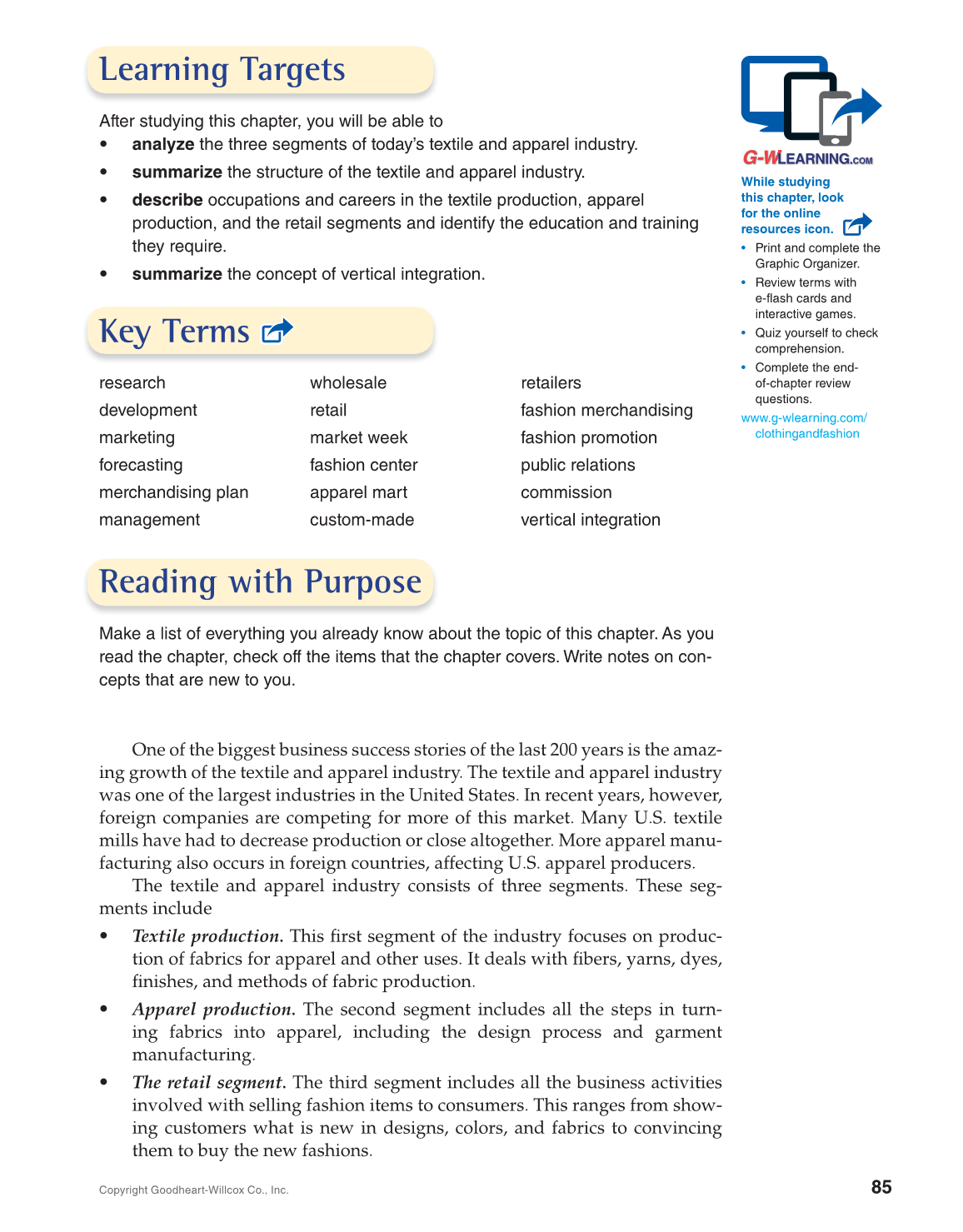85
While studying
this chapter, look
for the online
resources icon.
• Print and complete the
Graphic Organizer.
• Review terms with
e-flash cards and
interactive games.
• Quiz yourself to check
comprehension.
• Complete the end-
of-chapter review
questions.
www.g-wlearning.com/
clothingandfashion
Copyright Goodheart-Willcox Co., Inc.
Learning Targets
After studying this chapter, you will be able to
• analyze the three segments of today’s textile and apparel industry.
• summarize the structure of the textile and apparel industry.
• describe occupations and careers in the textile production, apparel
production, and the retail segments and identify the education and training
they require.
• summarize the concept of vertical integration.
Key Terms
research
development
marketing
forecasting
merchandising plan
management
wholesale
retail
market week
fashion center
apparel mart
custom-made
retailers
fashion merchandising
fashion promotion
public relations
commission
vertical integration
Reading with Purpose
Make a list of everything you already know about the topic of this chapter. As you
read the chapter, check off the items that the chapter covers. Write notes on con-
cepts that are new to you.
One of the biggest business success stories of the last 200 years is the amaz-
ing growth of the textile and apparel industry. The textile and apparel industry
was one of the largest industries in the United States. In recent years, however,
foreign companies are competing for more of this market. Many U.S. textile
mills have had to decrease production or close altogether. More apparel manu-
facturing also occurs in foreign countries, affecting U.S. apparel producers.
The textile and apparel industry consists of three segments. These seg-
ments include
• Textile production. This fi rst segment of the industry focuses on produc-
tion of fabrics for apparel and other uses. It deals with fi bers, yarns, dyes,
fi nishes, and methods of fabric production.
• Apparel production. The second segment includes all the steps in turn-
ing fabrics into apparel, including the design process and garment
manufacturing.
• The retail segment. The third segment includes all the business activities
involved with selling fashion items to consumers. This ranges from show-
ing customers what is new in designs, colors, and fabrics to convincing
them to buy the new fashions.
